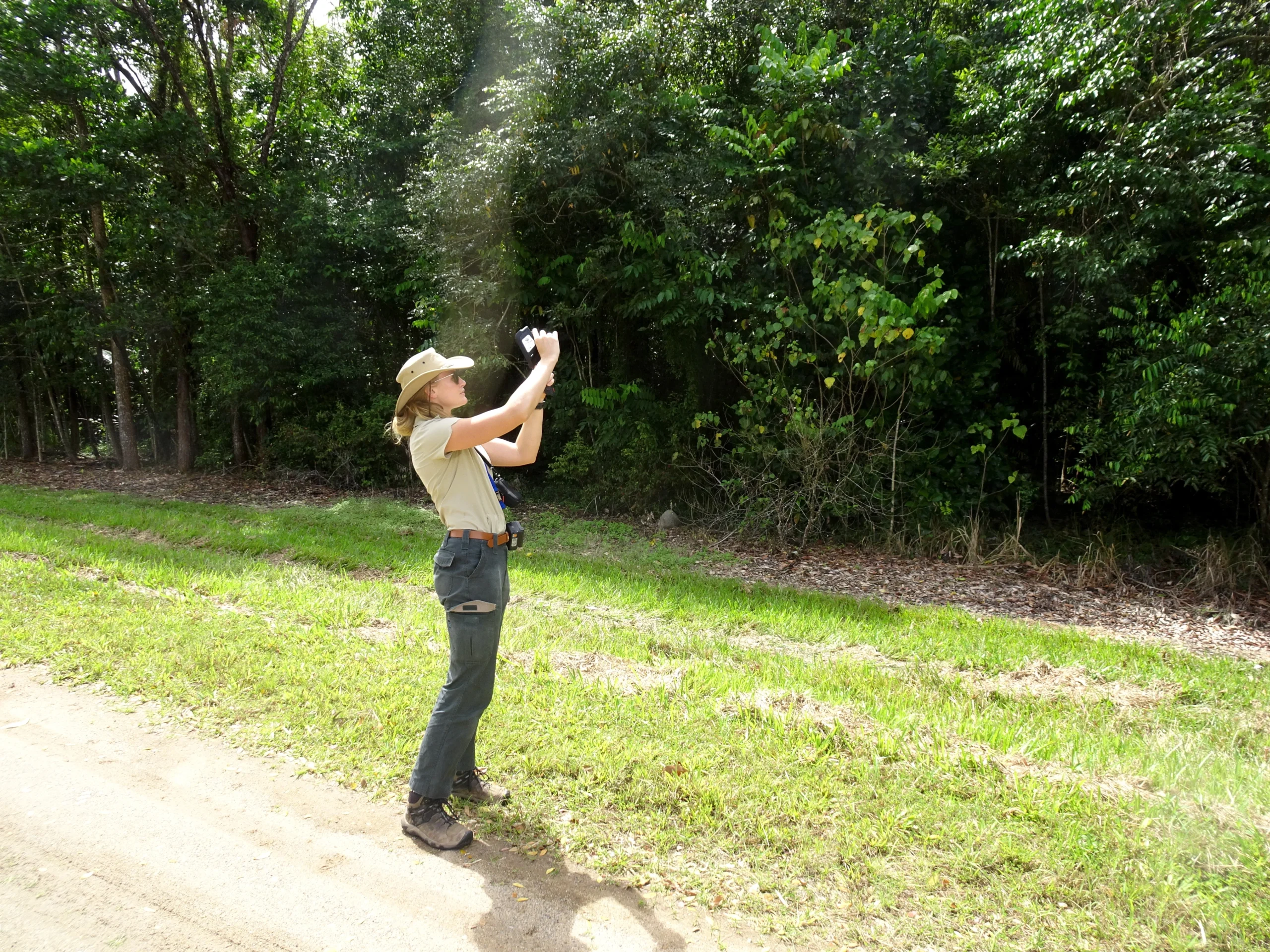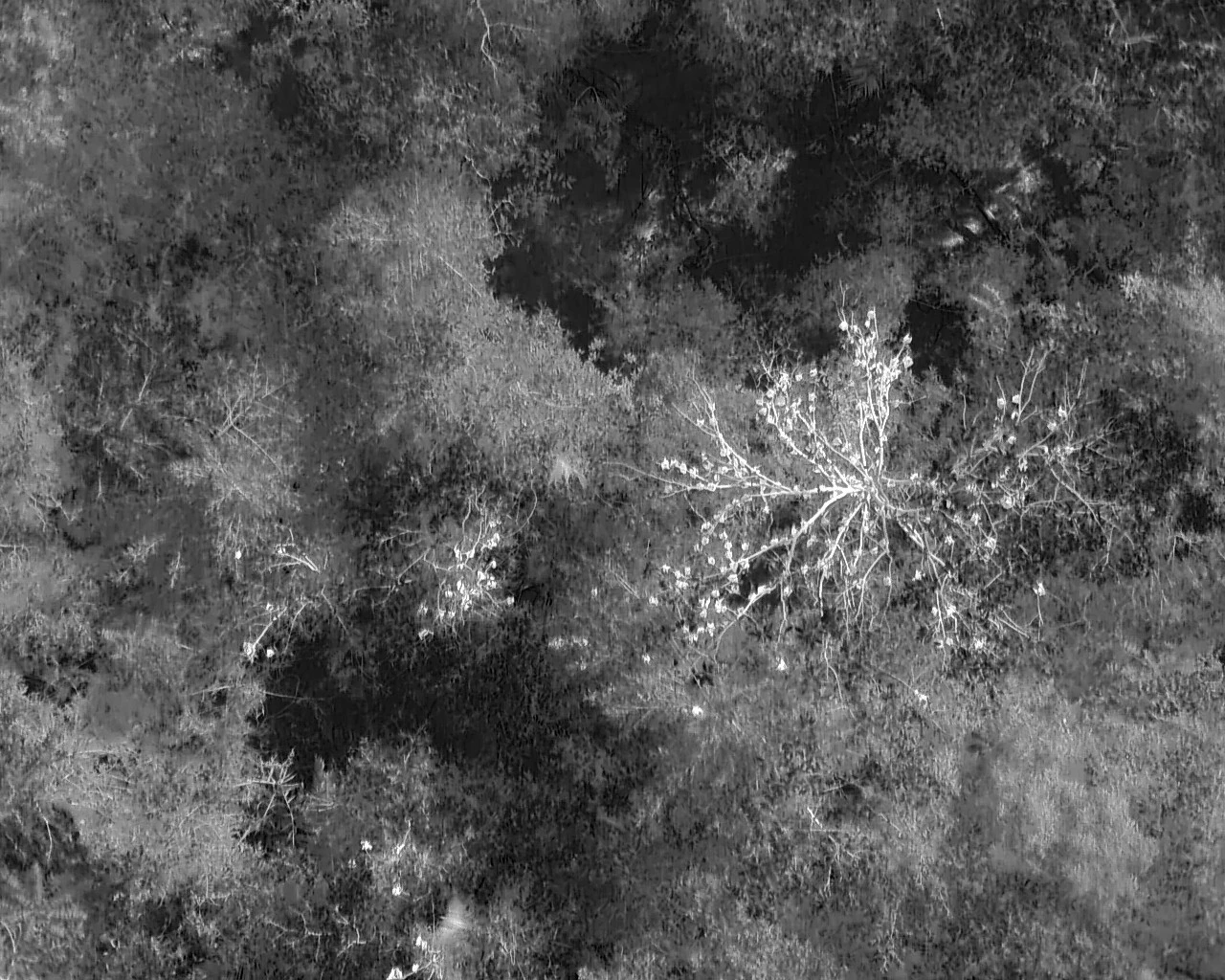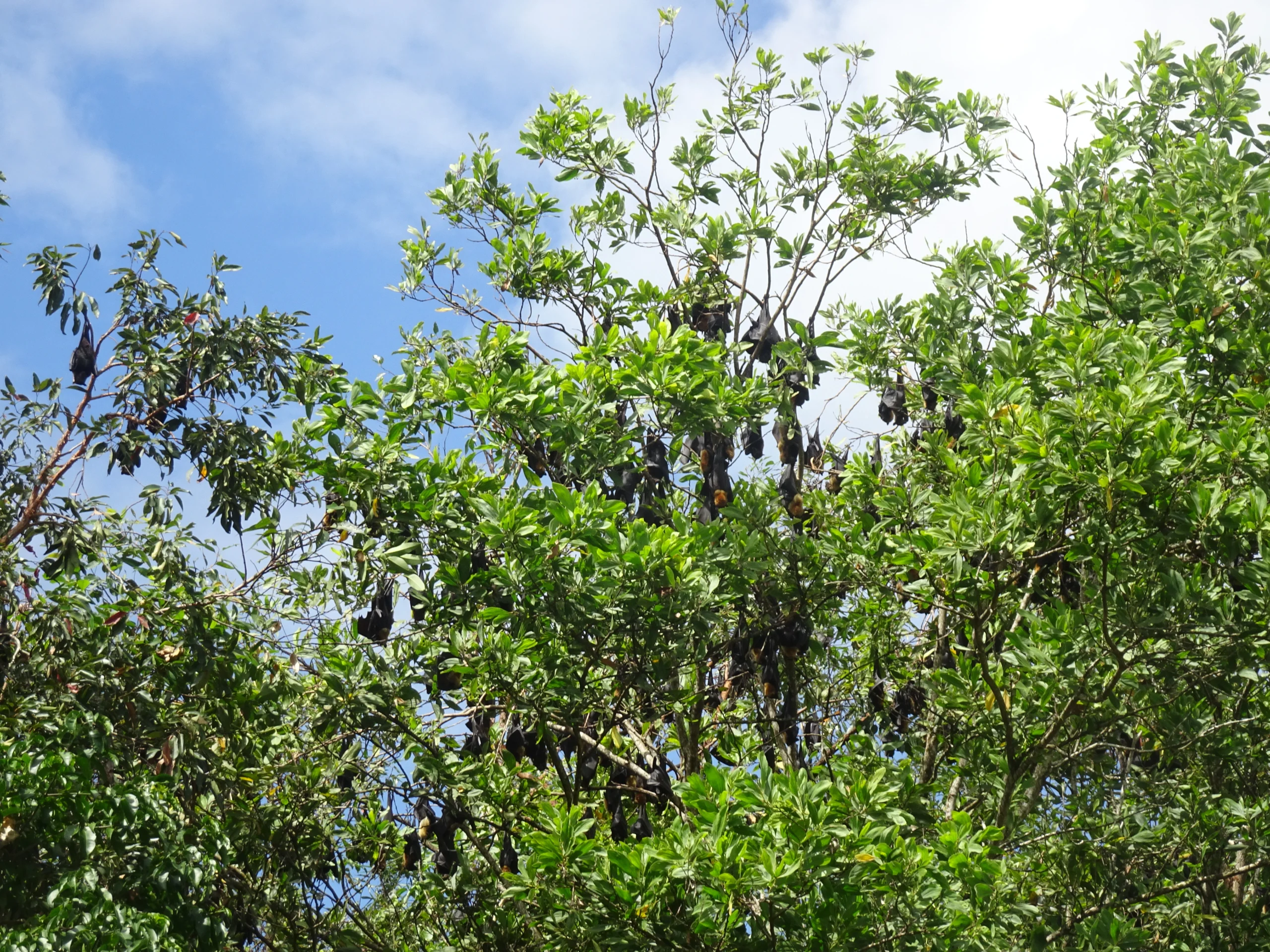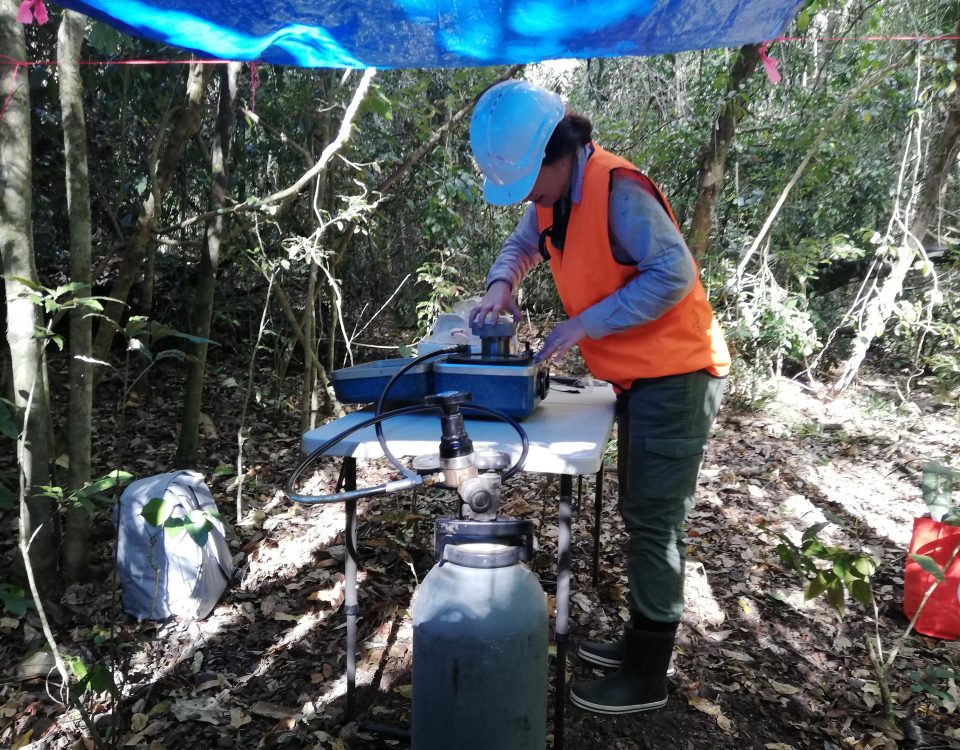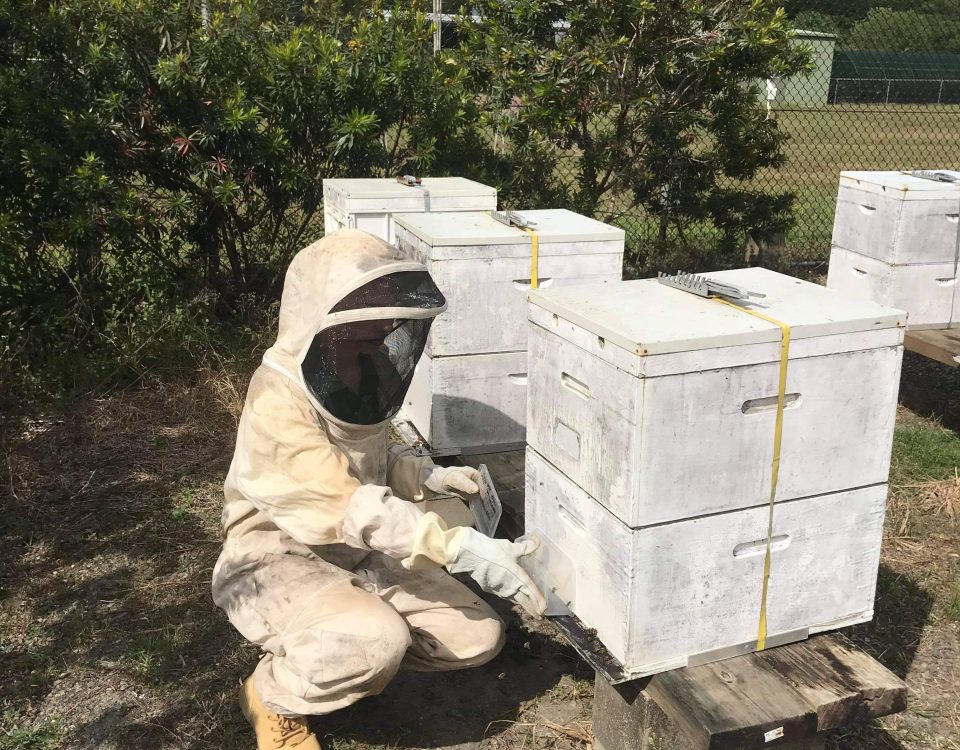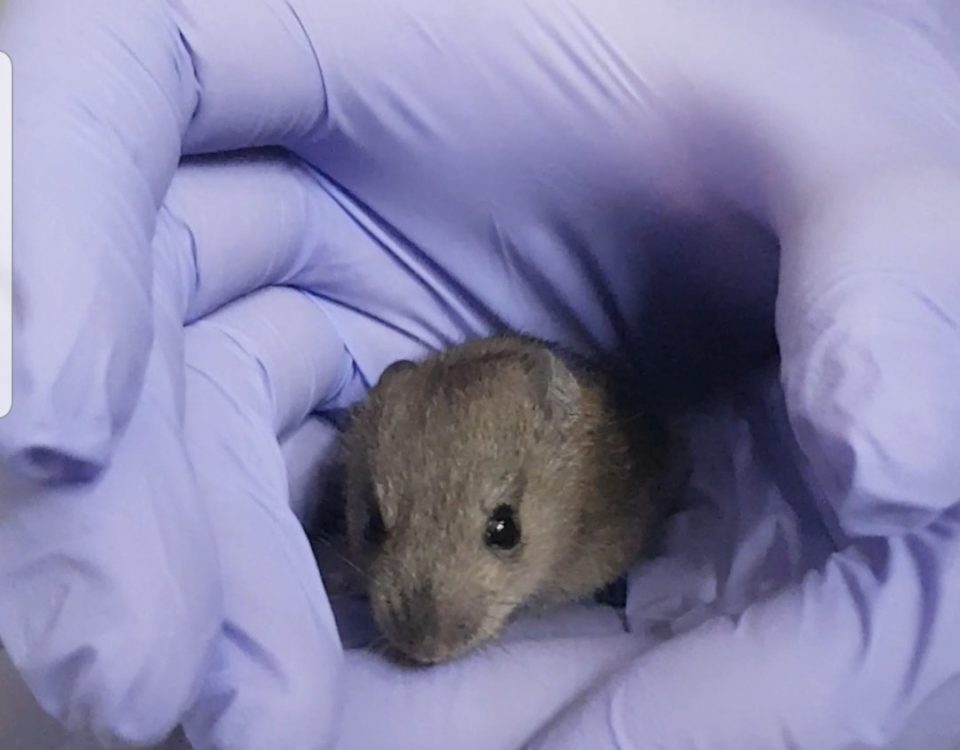Emmeline Norris
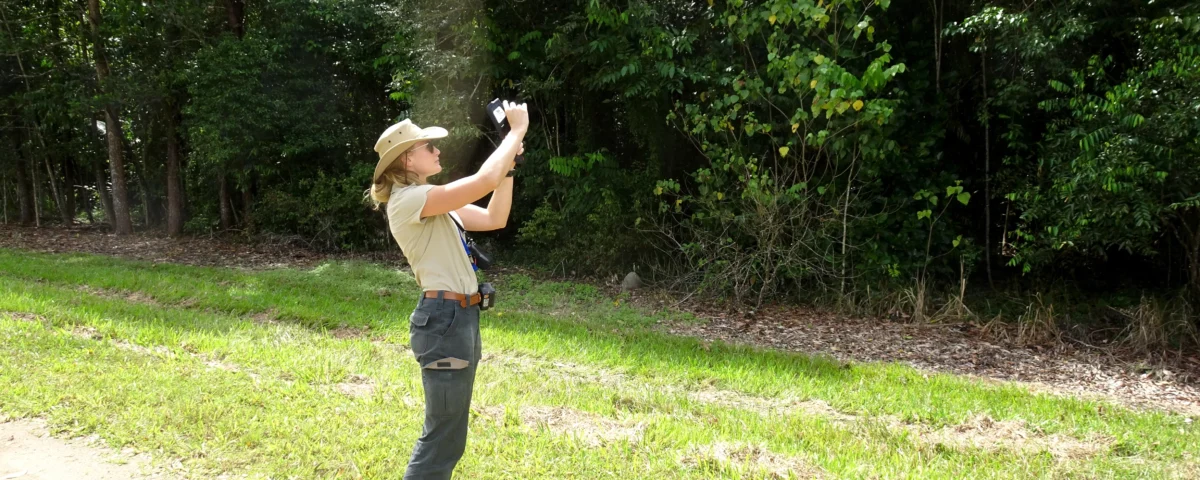
Utilising drone-based thermal remote sensing technology to accurately estimate spectacled flying-fox (Pteropus conspicillatus) abundance and model population trajectories.
Thermal Drones Help to Monitor Endangered Spectacled Flying-Foxes
G lobally, many tropical forest animals are threatened with extinction due to deforestation, hunting, and climate change. Monitoring populations is vital for conservation to evaluate the effectiveness of management actions but obtaining reliable population counts can be challenging in tropical forests where dense vegetation and complex terrain hinder access and obscure animals.
This project, funded by the Skyrail Rainforest Foundation, uses the case study of the endangered spectacled flying-fox (Pteropus conspicillatus) to explore whether drone-mounted thermal cameras offer a better alternative to ground-based monitoring. Once abundant, spectacled flying-foxes have suffered a severe population decline, exacerbated by a heatwave in 2018 which is estimated to have killed roughly a third of the remaining population. As a keystone species involved in pollination and seed dispersal services, conserving the spectacled flying-fox is important for the persistence of Australia’s ancient tropical forests.
"My research is based on using thermal drones to help monitor endangered Spectacled Flying-Foxes”
The first phase of this project focuses on optimising spectacled flying-fox detection in drone thermal imagery across diverse tropical forests. Preliminary results from the Atherton Tablelands and Cassowary Coast show spectacled flying-foxes are detectable in drone thermal imagery despite high ambient temperatures (27–30°C), humidity (60–80%), and dense vegetation.
Importantly, drones flying 20 m above the forest canopy caused no visible disturbance response to the spectacled flying-foxes, whereas human observers walking beneath the trees triggered agitated behaviours such as vocalising, climbing higher, or flying away. These observations suggest drone-based surveys may offer a less invasive alternative to ground-based monitoring methods.
The second phase of the project aims to use population counts from the first part of the project to establish a standardised and widely applicable method for assessing population trajectories in highly mobile species such as flying-foxes that have spatially and temporally unpredictable population dynamics.
The results of this study will have immediate and critical applications to threatened species conservation in line with current national priorities. Funding from the Skyrail Rainforest Foundation has been crucial to the project’s success to date, supporting drone pilot licencing and equipment purchase.
